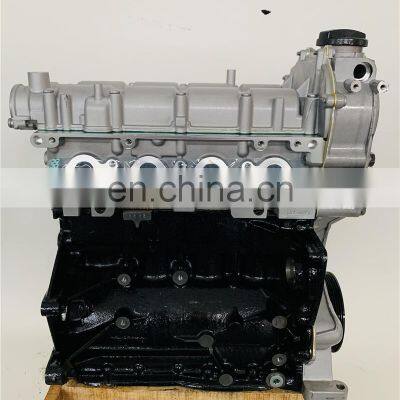Optimize fuel efficiency with a top-tier clp engine.
Optimize fuel efficiency with a top-tier clp engine.
Blog Article
Exactly How a Clp Engine Can Enhance Efficiency in Different Industries
The arrival of CLP engines notes a considerable change in operational efficiency throughout different fields, driven by their capability to enhance fuel consumption and minimize downtime. As companies increasingly focus on sustainability along with efficiency, the duty of CLP engines ends up being also a lot more critical.
Review of CLP Engines
CLP engines, or Continual Liquid Propellant engines, represent a substantial improvement in propulsion technology, especially for room applications. These engines use a constant feed system that permits for the continual expulsion of propellant, bring about boosted performance and performance contrasted to standard solid or hybrid propulsion systems. By preserving a consistent circulation of fluid propellant, CLP engines can achieve more accurate drive control, which is essential for maneuvering spacecraft in numerous mission scenarios.
The layout of CLP engines integrates innovative materials and cutting-edge gas administration systems. clp engine. This leads to reduced weight and enhanced dependability, crucial aspects for long-duration area objectives. In addition, the continuous operation minimizes the danger of burning instability, a typical challenge in traditional rocket engines.

Benefits in Manufacturing
The production of Continuous Fluid Propellant (CLP) engines provides a number of notable advantages that improve both efficiency and cost-effectiveness. One of the key advantages is the structured production procedure, which minimizes the complexity related to standard propulsion systems. By utilizing fluid propellant, makers can accomplish greater precision in engine performance, leading to maximized energy result and reduced waste.
Additionally, CLP engines promote a greater degree of modularity, permitting for simpler assimilation into different production lines. This flexibility can considerably lower lead times and boost overall functional versatility. The use of CLP technology likewise has a tendency to decrease the demand for considerable upkeep due to less moving components, which translates into reduced downtime and functional expenses.

Applications in Logistics
Leveraging Constant Liquid Propellant (CLP) engines in logistics provides substantial benefits in functional effectiveness and dependability. These engines provide a durable service for various transportation needs, enabling the useful link seamless motion of goods throughout vast distances. The integral layout of CLP engines permits consistent power result, which translates right into smoother and more foreseeable transport timetables.
Among the crucial applications of CLP engines in logistics is in durable freight transport, where they can drive both ground and aerial cars. Their capacity to keep high efficiency under differing tons problems makes certain that distribution timelines are satisfied, thus improving consumer fulfillment. Additionally, CLP engines can be integrated right into automated logistics systems, promoting real-time tracking and optimizing course planning.
Additionally, the toughness of CLP engines decreases upkeep downtime, allowing logistics business to optimize their operational capacities. This is especially helpful in warehousing procedures, where performance in taking care of and transferring goods is critical. As logistics proceeds to develop, the integration of CLP engines represents a forward-thinking approach that not just improves performance yet likewise supports the market's growing demands for integrity and speed.
Influence On Energy Efficiency
How do Continuous Liquid Propellant (CLP) engines boost energy performance in transportation? CLP engines use a constant circulation of fluid gas, maximizing combustion processes and maintaining a secure thrust output. This design reduces power losses related to conventional burning engines, where fuel delivery can vary and bring about inadequacies.
The constant This Site operation of CLP engines enables a much more effective thermal cycle, resulting in greater certain impulse compared to standard engines. clp engine. This converts to decreased gas intake for the same quantity of work done, dramatically decreasing functional costs throughout numerous transport fields, consisting of aeronautics and maritime sectors
In addition, the capacity of CLP engines to keep optimal efficiency under varying load problems decreases the need for constant acceleration and deceleration, additionally enhancing fuel efficiency. Enhanced energy efficiency not just contributes to cost financial savings but additionally brings about lower greenhouse gas exhausts, straightening with international sustainability objectives.
Future Trends and Innovations
Arising advancements in Constant Liquid Propellant (CLP) engine technology assurance to transform the landscape of transport effectiveness and sustainability. As industries pivot towards greener options, CLP engines stand at the leading edge, incorporating cutting-edge materials and design methodologies that boost efficiency while minimizing environmental impact.
Among one of the most promising patterns is the adoption of crossbreed systems that incorporate CLP engines with renewable power resources. This harmony can maximize fuel consumption and decrease exhausts, lining up with international sustainability goals. In addition, advancements like it in computational liquid characteristics (CFD) are helping with the design of even more aerodynamically reliable engines, resulting in lowered drag and boosted gas efficiency.
Additionally, the advancement of wise surveillance systems is readied to improve functional effectiveness. These systems leverage information analytics and IoT modern technology to maximize engine performance in real-time, making certain that the engines operate within their most effective parameters.
As research study proceeds to explore alternate propellant solutions-- such as biofuels and synthetic gas-- the future of CLP engines looks promising. By utilizing these developments, sectors can not just boost their effectiveness however also contribute significantly to a cleaner, much more sustainable future in transport.
Verdict
In verdict, CLP engines represent a significant advancement in efficiency across multiple markets. The assimilation of sophisticated products and fewer relocating components decreases maintenance demands, while placement with sustainability objectives settings CLP engines as a critical innovation for the future.
Report this page